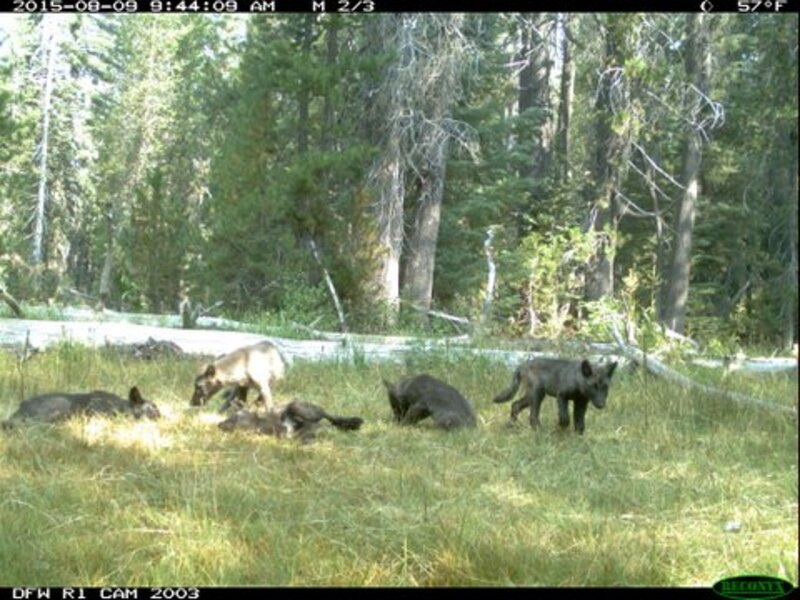Gray wolves set down roots in California – the first time in almost a century
Loading...
For the first time in nearly a century, a gray wolf pack has been seen setting down roots in California.
A wolf family consisting of two all-black adult wolves and five 4-month-old pups was caught on film near Mt. Shasta in the Cascade Range in northern California. The group, dubbed the “Shasta Pack” by researchers, was confirmed on Aug. 9.
“This news is exciting for California,” said Charlton Bonham, director of the California Department of Fish and Wildlife (CDFW), in a statement. “We knew wolves would eventually return home to the state, and it appears now is the time.”
The most recent prior sighting of a gray wolf in the Golden State was in December 2011. Back then, an animal with the less personable name of OR-7 ranged hundreds of miles from his native home in Oregon into the Cascades, raising hopes for a possible wolf immigration back into California.
Before the sighting of OR-7, the last confirmed sighting in California was in 1924.
After his sojourn, OR-7 eventually returned back to Oregon, found a mate, and had his own pups. The news prompted California wildlife officials to extend the California Endangered Species Act last summer to cover gray wolves with the hope that wolves would eventually make their way into the state.
The gray wolf is also listed as endangered under the federal Endangered Species Act of 1973.
These official protections make it illegal to harass, harm, pursue, hunt, shoot, wound, kill, trap, capture, or collect wolves that enter into or reside in California. One practical benefit of the new state listing is likely to be more resources to protect wolves in California, according to the Society for Conservation Biology in Washington, D.C.
Still, even optimistic scientists didn’t expect to see a population resurgence so soon.
“They have beat us to the punch on a couple of occasions now,” Eric Loft, chief of the CDFW's wildlife branch, told The Sacramento Bee.
Wolves have had a checkered relationship with humans in the American West. Before European colonization, records indicate the animals ranged all along the length of California, but human settlement eventually pushed the creatures to mountain ranges and wilderness at the state’s borders.
Ranchers put bounties on wolves and coyotes, which were seen as vermin and pests that could threaten livestock. Additionally, hunters decimated deer and prey populations, killing off a major portion of the wolves’ food sources. By the mid-1920s, wolves had pretty much disappeared from the state, as well as the rest of the country.
But in the 1990s, pressure from conservationists and biologists led to wolves being reintroduced into Yellowstone National Park, in large part to control rampant elk populations. Since then, wolf populations have been thriving and making their way westward.
Currently, the Oregon-Washington region is home to an estimated 145 wolves in 31 packs.
But not all residents have been huge fans of the encroaching wolf populations. Ranchers and hunters have criticized the animals for killing livestock and reducing hunting game, in some cases successfully lobbying for management plans that strip away protections for the animals.
Wolves do not have federal protection in Alaska, Idaho, and Montana, as well as parts of Utah, Oregon, and Washington.
Even after the conservation efforts, gray wolves now occupy about 10 percent of their former range.
Biologists will attempt to track the pack in California, says Karen Kovacs, a wildlife program manager with the CDFW. She called the reintroduction of the species “remarkable.”
“These are very resilient critters,” she told the Los Angeles Times.
For more information on how to identify a wolf or what to do when encountering one, there is guidance available on the CDFW website.






